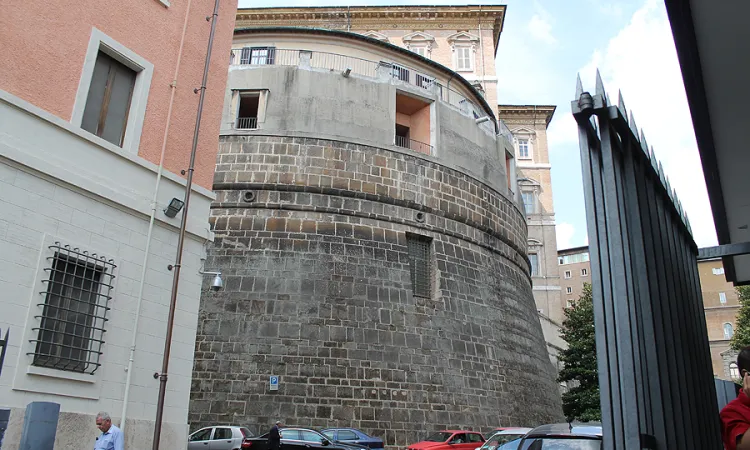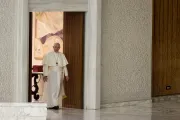Tosi goes on to underscore that the only provisions on real estate were issued in March 2008 and "imposed the request for an authorization exclusively for the selling of real estate that the IOR already owned, while there were no limitations on real estate acquisitions."
Tosi also denies reports that risk management, internal auditing, and the college of auditors did not put in action adequate checks, since he "received a daily and detailed report from the risk management office on the main values of risk." Tosi stresses that the minutes show both the college of auditors and the internal auditing had a detailed report on everything.
Tosi's statement leaves many questions open.
First question: why did the Council of Superintendence decide to make speculative investments? According to the IOR 2015 annual report, the profits were 16,1 million euros, while the net financial result was 42,8 million euros. The year before the net financial result was 104,5 million. This drop-off in revenue (more than a 50% drop) was described as "part of the strategy that began at the end of 2014 to make the IOR portfolio more secure."
More in A Vatican Observer
It was mostly a new investment strategy. In June 2012, there was the first meeting ever of the IOR general direction with a group of journalists.. During the meeting, Paolo Cipriani - who was general director at the time - explained the IOR investment policies and stressed that those policies were not speculative. What did determine the new strategy, and why?
The second question is about real estate management. Tosi referred to a 2008 provision that prohibited the sale of real estate owned by the IOR. There is an ongoing trial against the former IOR president Angelo Caloia, his general director, now deceased, Lelio Scaletti, and the lawyer Liuzzo, over the management of the IOR real estate. Beyond that, the question is, why have the purchase of real estate funds been monitored, if they were permitted?
The third question regards IOR procedures. The Council of Superintendence is the real star of this show: no decision can be made without it, no investment can be placed without its ok. When the Council opted for a new investment plan, the investment plan was executed, despite managers' doubts.
So, why did the IOR initiate a lawsuit against the former general director and his former vice-general director Paolo Cipriani and Massimo Tulli? The two were found guilty of mismanagement, and the trial is currently under appeal. Why, then, did the tribunal find them guilty of mismanagement, if they could not make any decisions without the approval of their superiors?
The story of Cipriani and Tulli certainly needs some more details. The two resigned in July 2013, when the Nunzio Scarano's scandal broke. Monsignor Scarano was an official at the Administration of the Patrimony of the Apostolic See. He was involved in two different trials in Italy: one at the tribunal of Salerno for predatory lending and illegal financing, and one at the tribunal of Rome for corruption and defamation. The case brought to the historic first instance of the execution of international letters rogatory between the Republic of Italy and the Holy See
In the middle of the scandal, Cipriani and Tulli resigned to help the IOR better to defend itself. They had left the Institute in financial health. The first IOR annual report, published in October 2013, stated that the IOR had 86,6 million in profits in 2012. The profits were four times greater than in 2011.
In July 2014, the IOR made the 2013 balance sheet public: the profits were just 2,9 million. The IOR stressed that the decline was due to three extraordinary events.
(Column continues below)
Subscribe to our daily newsletter
The report reads that "the IOR donated securities with a book value of EUR 15.1 million to a papal foundation, we wrote down by EUR 28.5 million a proprietary investment in external funds, and the value of our decades-old gold holdings declined by EUR 11.5 million, in line with the gold price. Meanwhile, while we benefited from a reduction of bond interest rates in the markets in 2012, which resulted in significant realized and unrealized gains, those interest rates did not fluctuate much in 2013, so the positive effect we saw in 2012 was not repeated in 2013.
In addition, operating expenses rose by EUR 8.3 m as our reform process accelerated significantly."
The report made a direct reference to a write-down of a proprietary investment in external funds. Can the alleged mistake in investments be attributed to Cipriani and Tulli? Or must it be attributed to the direction that replaced them after their resignation? It is noteworthy to recall that, after their departure, the interim general director was president von Freyberg, while the vice-general director was Rolando Marranci, who later took over the position of general director.
The framework is food for further thought, if we consider that the first Council of Europe's Moneyval report on the Holy See / Vatican City State, issued in July 2012, praised the IOR procedures, which in some cases even surpassed the standards requested by the legislation then in force.
The process of shoring up the books and implementing better accounting procedures had begun long before, as the 2012 Moneyval report showed. However, in 2013, someone - or some group of someones - decided to entrust costly external consultants coming from the US to finalize a job already underway. The hiring of consultants cost 8,3 million euros. In the meantime, the IOR dismissed some of the profitable funds in the name of a new policy on investment that has not been clarified yet.
At the moment, there are two ongoing trials in the Vatican (Cipriani and Tulli's appeal and the one against Caloia, Scaletti, and Liuzzo), while the IOR provoked the current institutional crisis with a report after the denial of a loan to the Vatican Secretariat of State. The loan was intended to finalize the purchase of luxury real estate in London.



